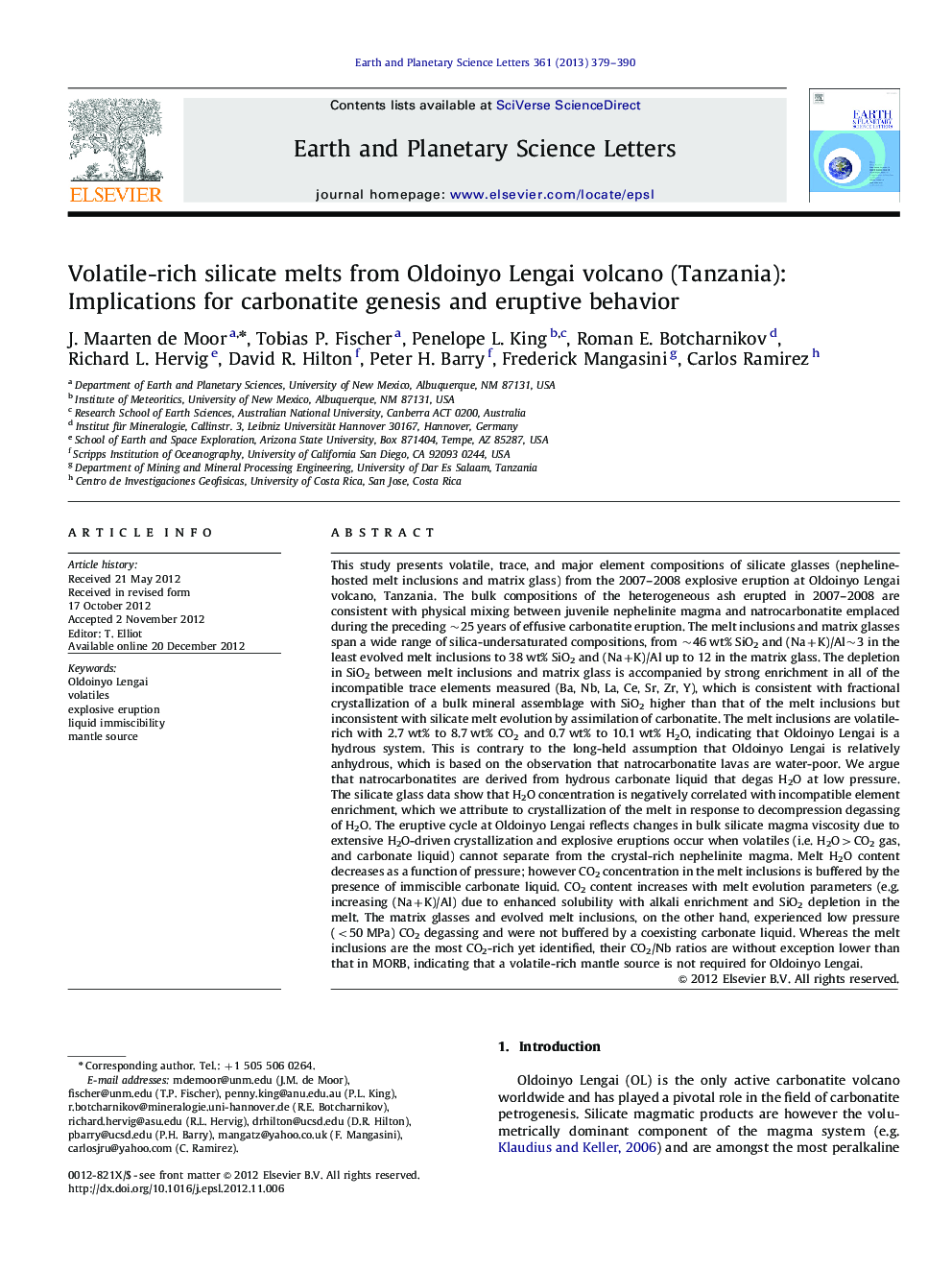| کد مقاله | کد نشریه | سال انتشار | مقاله انگلیسی | نسخه تمام متن |
|---|---|---|---|---|
| 4677189 | 1634792 | 2013 | 12 صفحه PDF | دانلود رایگان |

This study presents volatile, trace, and major element compositions of silicate glasses (nepheline-hosted melt inclusions and matrix glass) from the 2007–2008 explosive eruption at Oldoinyo Lengai volcano, Tanzania. The bulk compositions of the heterogeneous ash erupted in 2007–2008 are consistent with physical mixing between juvenile nephelinite magma and natrocarbonatite emplaced during the preceding ∼25 years of effusive carbonatite eruption. The melt inclusions and matrix glasses span a wide range of silica-undersaturated compositions, from ∼46 wt% SiO2 and (Na+K)/Al∼3 in the least evolved melt inclusions to 38 wt% SiO2 and (Na+K)/Al up to 12 in the matrix glass. The depletion in SiO2 between melt inclusions and matrix glass is accompanied by strong enrichment in all of the incompatible trace elements measured (Ba, Nb, La, Ce, Sr, Zr, Y), which is consistent with fractional crystallization of a bulk mineral assemblage with SiO2 higher than that of the melt inclusions but inconsistent with silicate melt evolution by assimilation of carbonatite. The melt inclusions are volatile-rich with 2.7 wt% to 8.7 wt% CO2 and 0.7 wt% to 10.1 wt% H2O, indicating that Oldoinyo Lengai is a hydrous system. This is contrary to the long-held assumption that Oldoinyo Lengai is relatively anhydrous, which is based on the observation that natrocarbonatite lavas are water-poor. We argue that natrocarbonatites are derived from hydrous carbonate liquid that degas H2O at low pressure. The silicate glass data show that H2O concentration is negatively correlated with incompatible element enrichment, which we attribute to crystallization of the melt in response to decompression degassing of H2O. The eruptive cycle at Oldoinyo Lengai reflects changes in bulk silicate magma viscosity due to extensive H2O-driven crystallization and explosive eruptions occur when volatiles (i.e. H2O>CO2 gas, and carbonate liquid) cannot separate from the crystal-rich nephelinite magma. Melt H2O content decreases as a function of pressure; however CO2 concentration in the melt inclusions is buffered by the presence of immiscible carbonate liquid. CO2 content increases with melt evolution parameters (e.g. increasing (Na+K)/Al) due to enhanced solubility with alkali enrichment and SiO2 depletion in the melt. The matrix glasses and evolved melt inclusions, on the other hand, experienced low pressure (<50 MPa) CO2 degassing and were not buffered by a coexisting carbonate liquid. Whereas the melt inclusions are the most CO2-rich yet identified, their CO2/Nb ratios are without exception lower than that in MORB, indicating that a volatile-rich mantle source is not required for Oldoinyo Lengai.
► Highest CO2 contents ever measured in a natural silicate melt.
► Mantle source is not unusually CO2-rich.
► Oldoinyo Lengai is water-rich, contrary to prior assumption of anhydrous system.
► Carbonatite is derived from hydrous carbonate fluid.
► Explosive eruptions at Oldoinyo Lengai are due to H2O degassing
Journal: Earth and Planetary Science Letters - Volume 361, 1 January 2013, Pages 379–390